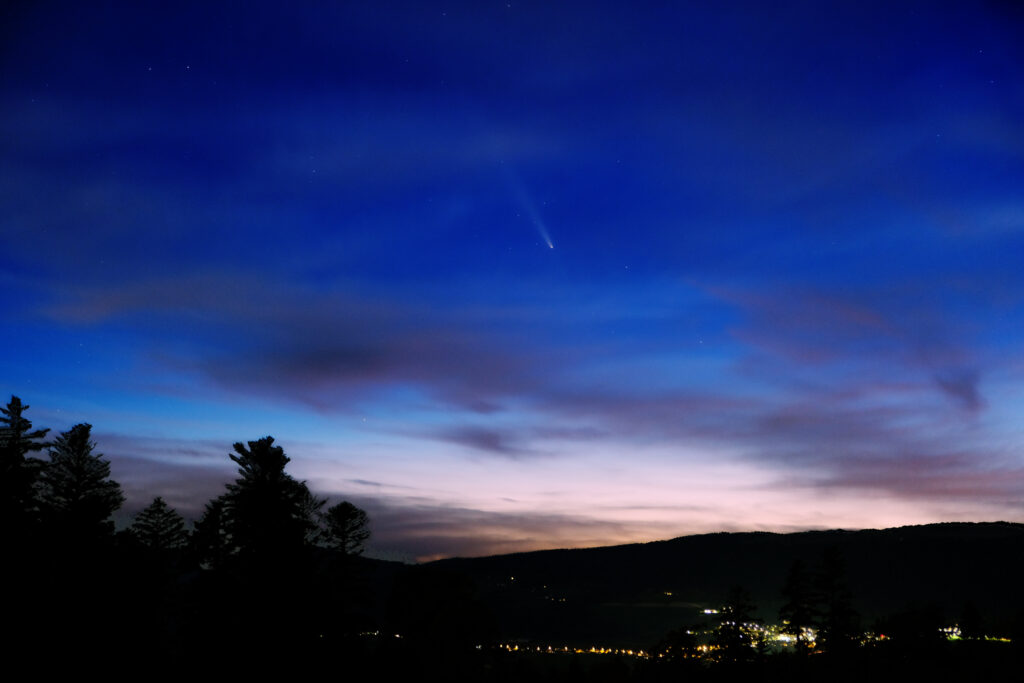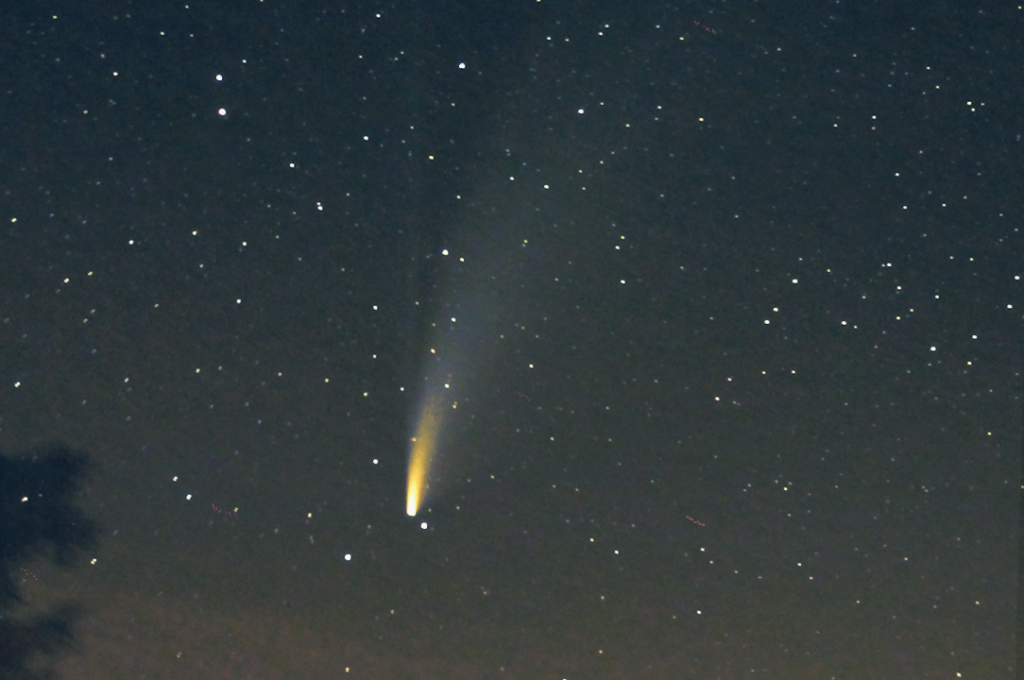- Tsuchinshan–ATLAS comet photos album
I have been following this new stargazer comet since the end of September. It was kind of a gamble to know if this comet would survive passing so close to the sun and survive. But thankfully, it did survive and what a spectacle it is giving us. It might not be as bright as Neowise in 2020, but this time, I have a better camera to capture it and the pictures are just amazing. Too bad the weather was so cloudy this week… These pictures and videos were taken with my Fujifilm XT4, with the 18-55 mm or the 50-140 …
- Crepuscular rays from Neuchâtel
Taken the 4th January 2023, with my Fujifilm XT4, XF50-140mm F2.8 R LM OIS WR, at ISO 160, f2/8, 80mm and 1/250s exposure. It was a nice cold morning that day, with two layers of clouds, one at the surface of lake Neuchâtel, and another layer at approx 3000m. Just enough to touch the tip of some summits in the prealps. The sun was rising and started to cast some interesting shadows along the way. It is a phenomenon that is commonly called crepuscular rays. Although the shadows are actually perfectly parallel to one another, perspective gives the impression that …
- Diffraction patterns in astronomical imaging
The first image from the James Webb Space Telescope (JWST) was uncover a few days ago [1]. This is truely an incredible image, showing the galactic cluster SMACS 0723, which is slowly becoming the de-facto target for newly deployed space telescopes as it was imaged by Hubble, Planck and Chandra before JWST. This image in particular took the JWST 12.5 hours of exposure to be able to see these objects as they are so dim in the sky. The best way to see how much of an achievement this is, is to compare it to the previous picture, taken by …
- Some pictures from this winter
Time flies: we are already in May, and I haven’t got time to even post these pictures in time… Anyway, better late than never. Pictures taken with my XT-4 and a Fujinon XF 50-140 mm f/2.8.
- NEOWISE seen from my garden
I know, this comet was seen 1 and a half year ago, but I didn’t had a blog then, so I have to do it now… I simply wanted to show off some of my pictures I took with a simple EOS100D and a 18-55 mm zoom lens. Nothing fancy really, but it was enough to capture the comet NEOWISE in July 2020, which was the brightest comet in a while visible in the northern hemisphere. These are a bunch of pictures, all taken with a simple EOS100D at various focal length. I stacked roughly 10-15 pictures for each final …
 I have been following this new stargazer comet since the end of September. It was kind of a gamble to know if this comet would survive passing so close to the sun and survive. But thankfully, it did survive and what a spectacle it is giving us. It might not be as bright as Neowise in 2020, but this time, I have a better camera to capture it and the pictures are just amazing. Too bad the weather was so cloudy this week… These pictures and videos were taken with my Fujifilm XT4, with the 18-55 mm or the 50-140 …
I have been following this new stargazer comet since the end of September. It was kind of a gamble to know if this comet would survive passing so close to the sun and survive. But thankfully, it did survive and what a spectacle it is giving us. It might not be as bright as Neowise in 2020, but this time, I have a better camera to capture it and the pictures are just amazing. Too bad the weather was so cloudy this week… These pictures and videos were taken with my Fujifilm XT4, with the 18-55 mm or the 50-140 … I know, this comet was seen 1 and a half year ago, but I didn’t had a blog then, so I have to do it now… I simply wanted to show off some of my pictures I took with a simple EOS100D and a 18-55 mm zoom lens. Nothing fancy really, but it was enough to capture the comet NEOWISE in July 2020, which was the brightest comet in a while visible in the northern hemisphere. These are a bunch of pictures, all taken with a simple EOS100D at various focal length. I stacked roughly 10-15 pictures for each final …
I know, this comet was seen 1 and a half year ago, but I didn’t had a blog then, so I have to do it now… I simply wanted to show off some of my pictures I took with a simple EOS100D and a 18-55 mm zoom lens. Nothing fancy really, but it was enough to capture the comet NEOWISE in July 2020, which was the brightest comet in a while visible in the northern hemisphere. These are a bunch of pictures, all taken with a simple EOS100D at various focal length. I stacked roughly 10-15 pictures for each final …